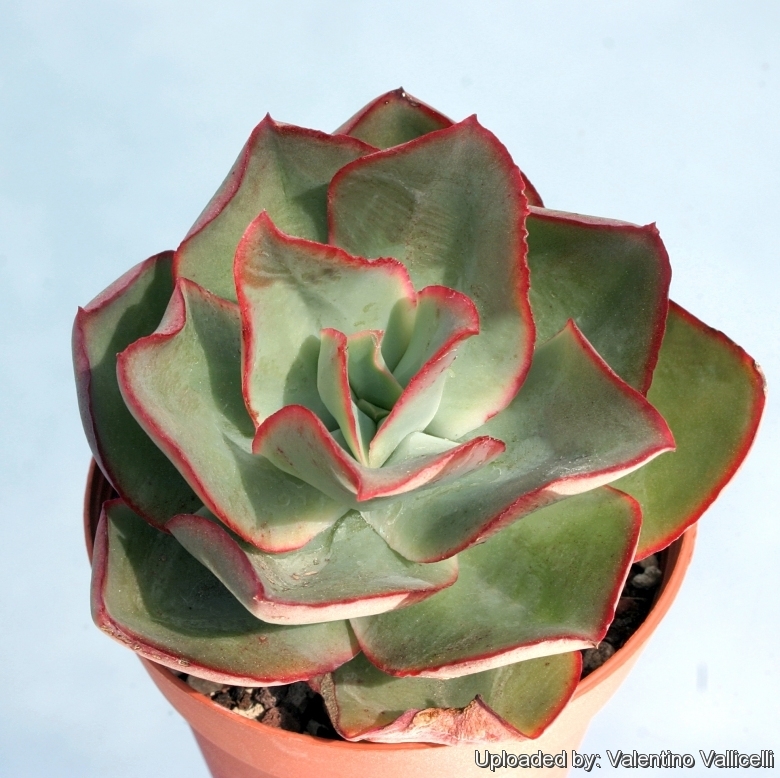
Echeveria rubromarginata Photo by: Valentino Vallicelli
It is one of the most handsome and district of echeverias, its attractiveness lies in the beautifully red-edged leaves.
Origin and Habitat: Mexico (Northern America)
Type locality: Orizaba,Veracruz-Puebla
Habitat: Grows in quite hot and dry areas.
Synonyms:
See all synonyms of Echeveria rubromarginata
Description: E. rubromarginata is a slow growing and unusual species. It has succulent rosettes, up to 25 x 30 cm in diameter and tall, it stay usually solitary but it can occasianally offset to form a small clump.
Stem: Stout, caudex-like, very short (almost stemless) it can slowly grow up to 5-7 cm tall, and approx 3 cm in diameter.
Leaves: 11-17 long, 7-9 cm wide, turgid, obovate or widely lanceolate, obtuse and mucronate to acute silvery-grey to pale green (slightly glaucous), with pink to purple-red slightly wavy margin:
Flowers: Red, yellow inside. The inflorescence is a 6-12 branched cymose-panicle, up to 1 m tall. Each branch bears about 5 flowers. Pedicel reddish 1-2 mm long, sepals up to 13 ascending, calix up to 14 mm long, approx 11 mm in diameter, petals red.
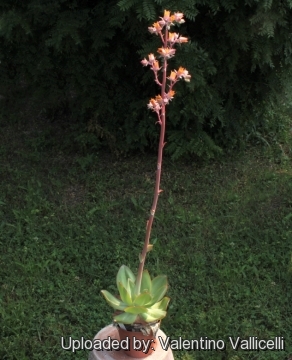 Echeveria rubromarginata Photo by: Valentino Vallicelli
Echeveria rubromarginata Photo by: Valentino Vallicelli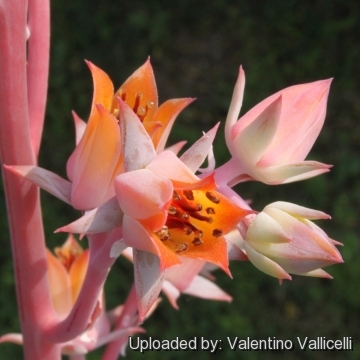 Echeveria rubromarginata Photo by: Valentino Vallicelli
Echeveria rubromarginata Photo by: Valentino Vallicelli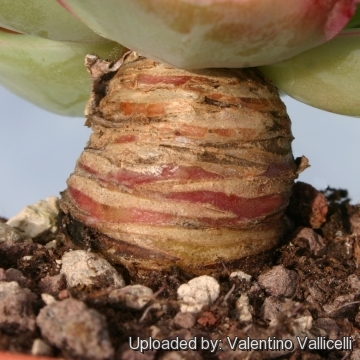 Echeveria rubromarginata Photo by: Valentino Vallicelli
Echeveria rubromarginata Photo by: Valentino Vallicelli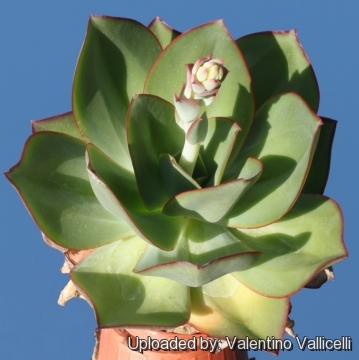 Echeveria rubromarginata Photo by: Valentino Vallicelli
Echeveria rubromarginata Photo by: Valentino Vallicelli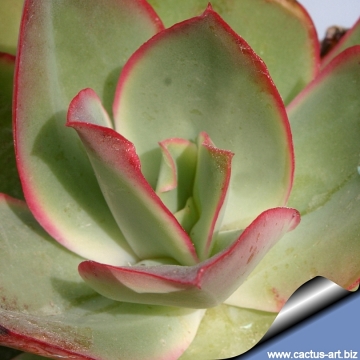 Echeveria rubromarginata Photo by: Cactus Art
Echeveria rubromarginata Photo by: Cactus Art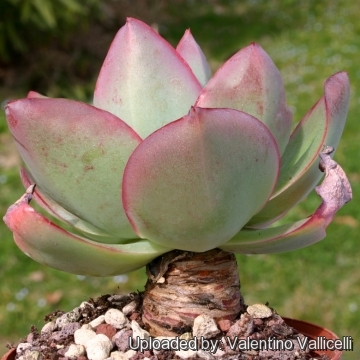 Echeveria rubromarginata Photo by: Valentino Vallicelli
Echeveria rubromarginata Photo by: Valentino Vallicelli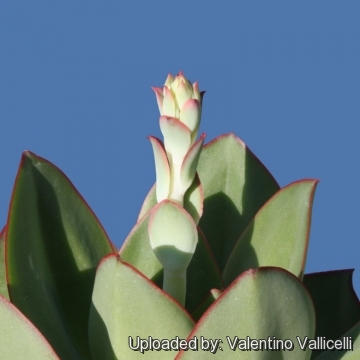 Echeveria rubromarginata Photo by: Valentino Vallicelli
Echeveria rubromarginata Photo by: Valentino VallicelliSend a photo of this plant.The gallery now contains thousands of pictures, however it is possible to do even more. We are, of course, seeking photos of species not yet shown in the gallery but not only that, we are also looking for better pictures than those already present.
Read More... Cultivation and Propagation: It can tolerate sun to shade but - generally speaking - the more light a plant gets the better it will display its colours and shape. However, when moving plants from lower light conditions into full sun, be wary of sun scorch, most easily avoided by ensuring plants are well-watered before moving them on a cloudy day. They can tolerate extended dry periods and survive drought without the need for watering, but they will grow stronger if they receive adequate moisture during their growing season, ut never allowing the plant to remain waterlogged (root rot sensitive). Use a very porous soil, which will allow quick drainage. Slow release fertilisers with a low to moderate nitrogen content are adequate for the spring and summer growing seasons, and additional fertiliser applications would not required until spring. Good air movement is important for minimising pest and disease risks, and avoiding excessive humidity in cool winter conditions is important to successfully growing Echeveria in the nursery environment. It can tolerate light frosts, but it is best overwintered at 5-10 °C.
With the cooler autumn temperatures tending to make their foliage colours become more intense than those of the active summer growing season.
Aphids like this plant (and all flowering Echeverias).
Propagation: Usually by seeds, but If the plant is repotted some of the bottom leaves can be removed, in order to attempt leaf propagation, it is also a common practice to collect the leaves on the flower stem. However this is not one of the easiest species to root, as many such cuttings will dry out without producing a plantlet, but with perseverance it is likely to get a few new plants. Needs good drainage


















